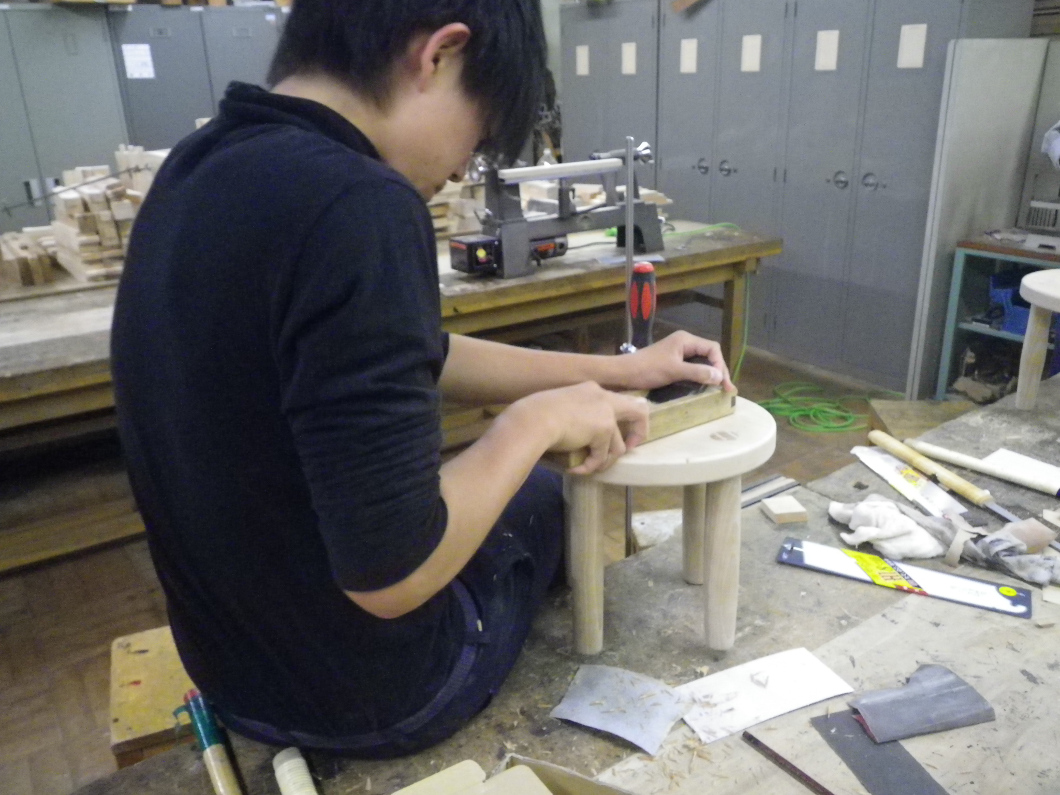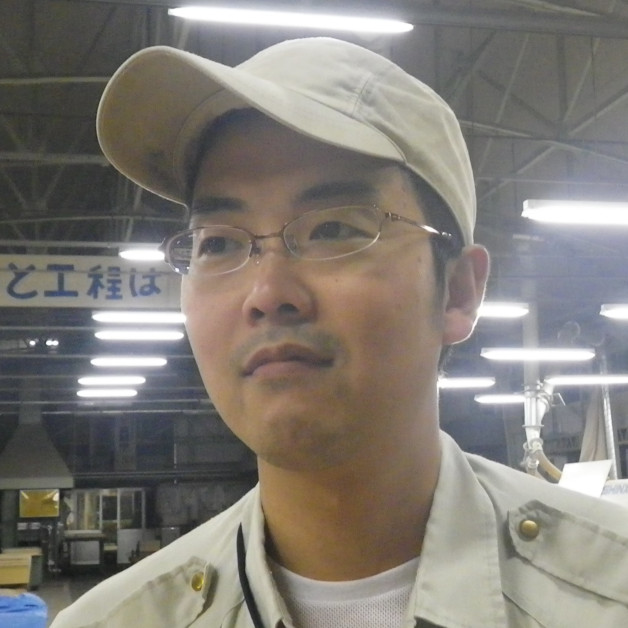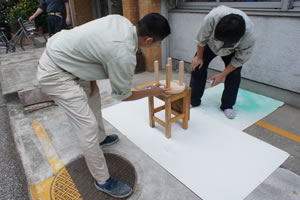
November 6, 2012
Instruction on Woodworking Techniques at a Municipal High School as a Resident Instructor
A woodworker at Shimizu’s Tokyo Mokkoujou Arts & Crafts Furnishings has become a resident instructor and is teaching woodworking techniques at Sumida Tech High School in Tokyo for a one-year period that began in April 2012.
He is teaching six third-year students of the school’s architectural division who are taking the course once a week as an elective course. The projects for the course are established for each school term. Students began with classroom study of basic woodworking knowledge during the first term. They are receiving instruction on how to use hand tools such as the plane, saw, and chisel, and on machine tool use, and will progress through the course with the objective of making a chair.

To make the chair, students will use a wood lathe (a machine tool that cuts with a fixed blade while rotating the lumber) to produce the legs and create a curved shape, use a drill press (a machine tool for boring holes) to create round bore holes for attaching the seat to the legs, and will hand-finish the chair with clear varnish (an uncolored transparent coating that enables the wood grain to show through).
During the second and third semesters, the plan is to split the time between building a shoe cupboard and a podium for the gymnasium. These tasks will help to develop the woodworkers of the future while teaching the students about the goodness of wood, the enjoyment and difficulties of wood, and mental preparedness.


I am impressed with how rapidly the students absorb knowledge and how reliable they are.
Supervising instructor: Hiroshi Tsuchiya, Production Group,
Tokyo Mokkoujou Arts & Crafts Furnishings

Even though they are in the architecture course, the students I am currently teaching had zero knowledge of woodworking or the techniques involved. I therefore experienced the difficulty of deciding what to teach, how to teach it, and how to give them advice.

During the class, I not only taught them how to make something; I took care to teach them the fun of creating something with your own hands and to provide guidance on how to finish a piece beautifully. The projects were made in a limited amount of time, but the students improved their woodworking skills as they gradually deepened their understanding of woodworking and all were able to finish making a chair in first term.
As the instructor, I naturally also had some doubts about whether the students, who were initially unfamiliar with how to use the hand tools and machine tools, would be able to complete the project successfully, and whether they would be okay in terms of safe use of the machinery. However, the students learned more quickly than I had expected, listened carefully to my advice, and worked intently. I was impressed at how reliable they were.
It makes me happy to think that I have passed on a part of the traditional woodworking techniques long handed down in Tokyo Mokkoujou Arts & Crafts Furnishings over the course of the year and I would be pleased if the students took an interest in the Japanese forestry industry and in fitting.
I would also like to use what I have learned from this experience about teaching and offering advice to provide guidance to my junior colleagues.
Sumida Tech High School in Tokyo
Sumida Tech is a technical high school in Morishita, in Koto-ku, Tokyo. The school celebrated the 110th anniversary of its founding in fiscal year 2010.
The school motto is “self-discipline, work diligently, and respect,” and the school’s goal is to develop skilled technicians who are strong in both mind and body, self-confident, and able to contribute to society through training in monozukuri (craftsmanship) and distinctive school events.
In addition to architecture, the full-time study program offers programs of study in mechanics, automotive technology, and electronics. The architecture program focuses on courses that involve practical training and experimentation, courses in drafting and interiors, CAD, and guidance on acquiring professional designations and qualifications.
The school also works to provide courses in formats that are easy to understand and that incorporate lectures in special subjects, many site tours, and other types of hands-on learning outside of the school.
